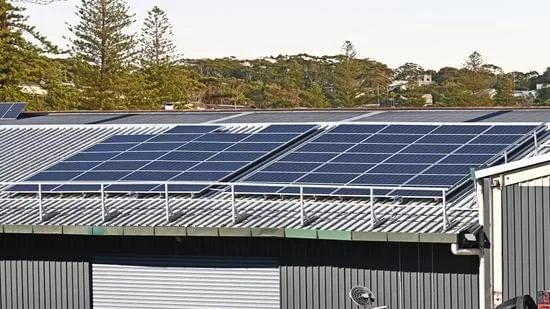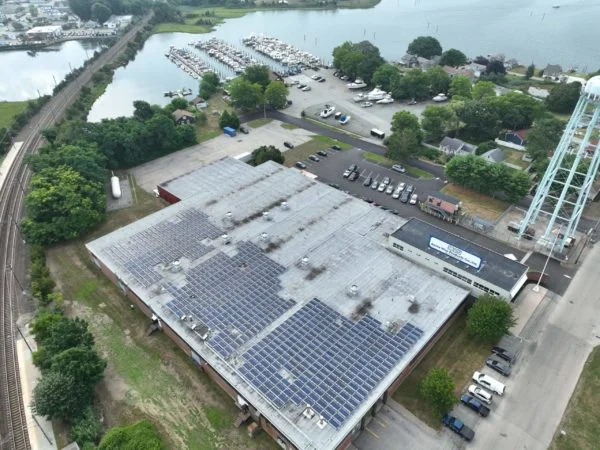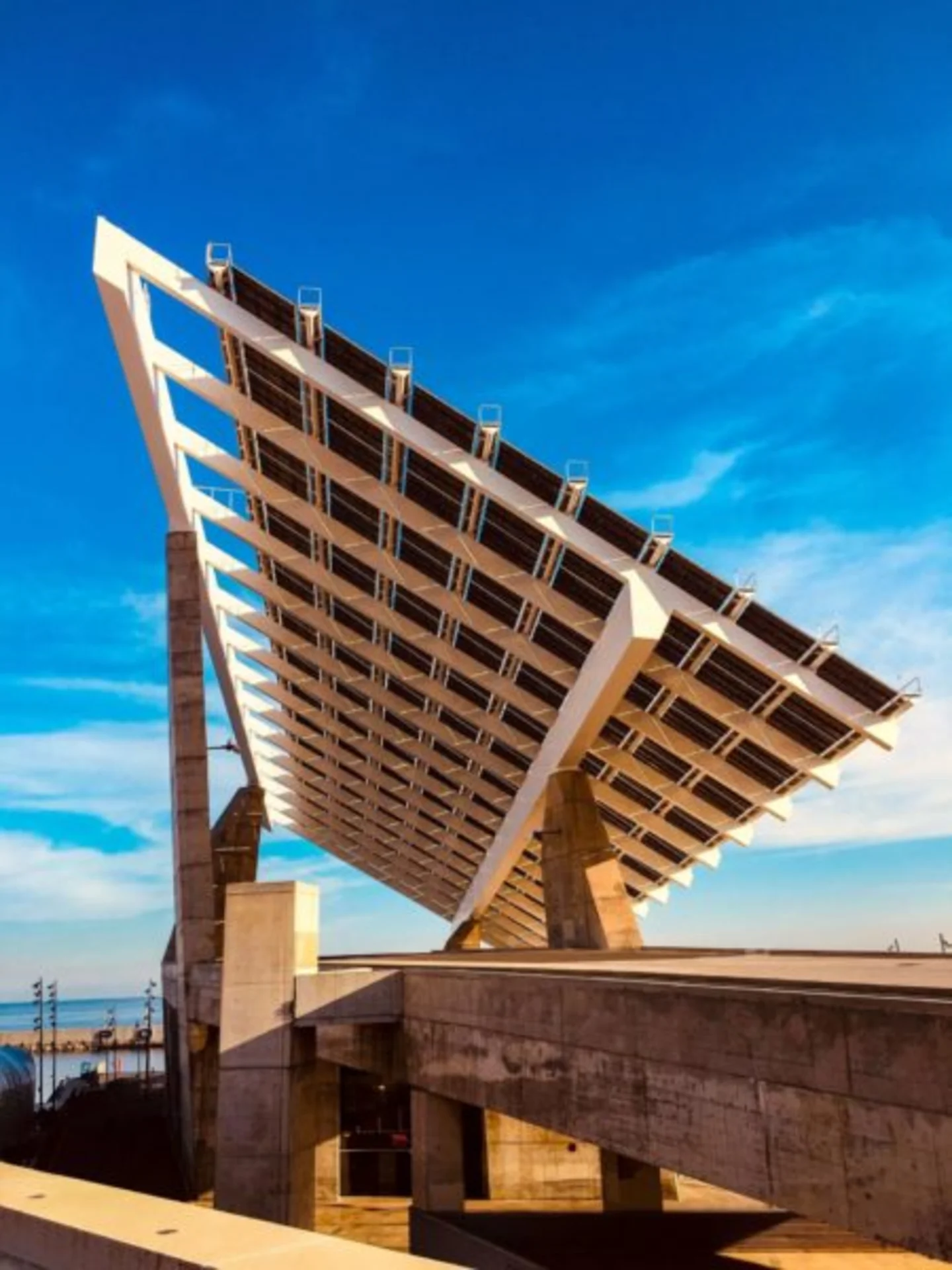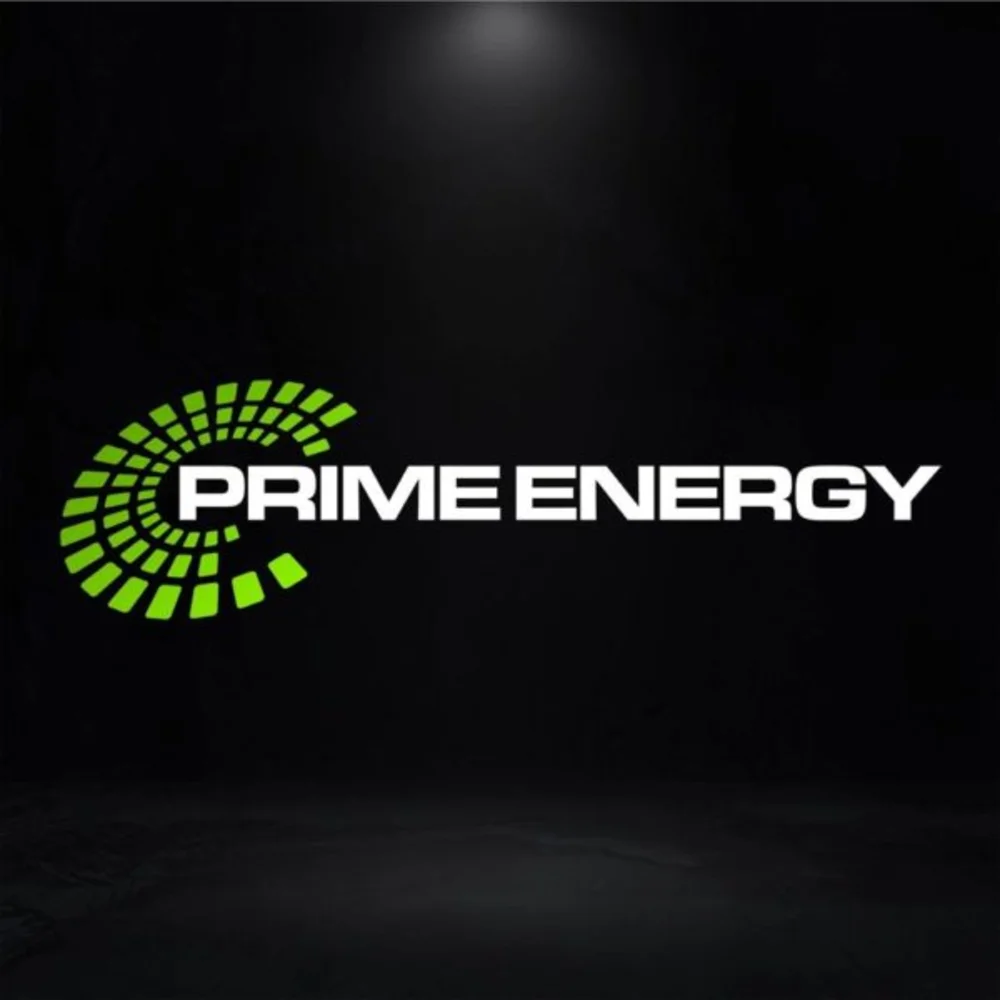
What is Commercial Solar Panel Installation?

Did you know that the number of businesses going solar is increasing?
Many companies are starting to use solar energy. Big companies like Apple, Amazon, and Walmart are now using the sun’s power for their electricity. Right now, you can choose from three different kinds of solar panels in the market. Currently, there are three types of solar installations available in the market:
- Residential solar panel installations: These are solar panels installed on homes.
- Commercial solar panel installations: These are solar panels installed on business premises.
- Solar farms: These are large-scale installations, also known as solar parks or solar power stations.
This is revolutionizing operations by reducing energy costs and promoting sustainability. It offers a profitable avenue as businesses harness solar power for energy independence.
Let’s learn more about commercial solar panel installation and it’s benefits to businesses.
Understanding Commercial Solar Panel Installation
More and more companies are using solar energy to reduce their energy consumption and lower their costs. That’s why it’s important to understand how commercial solar panel installation works.
This process involves businesses installing solar panels to harness power from the sun. Setting up commercial solar panels is a multi-step process, which includes the following:
- System Design: We plan the arrangement of solar panels and how they connect to the power system.
- Getting Permits: Local authorities must approve and issue the necessary permits.
- Installation: This is the actual process of putting the solar panels in place. This could be on rooftops or ground-mounted arrays.
- Inverter Setup: Devices called inverters are installed. These devices enable the conversion of solar energy into electricity for use.
Each step is crucial to ensure the effective use of solar energy.


Types of solar panels and their suitability for commercial use
Solar panels convert sunlight into electricity and come in three main types: monocrystalline (high efficiency, space-saving), polycrystalline (cost-effective, great for large spaces), and thin-film (lightweight, flexible for unique installations). Businesses can also add battery storage to store excess energy for later use. To learn more about the best solar panels click here.
The Benefits of Commercial Solar Panel Installation
When it comes to top-tier solar solutions, choosing a reliable provider, like Prime Energy Solar, is crucial. A dependable solar company in Connecticut ensures you get the most out of your investment, providing efficient systems and excellent customer service. Over the years, Prime Energy Solar has proven its reliability, striving to be the top solar company.
which is why selecting a good provider involves key considerations. These include the company’s track record, the quality of its solar panels, its pricing, and its commitment to customer satisfaction. Prime Energy Solar ticks all these boxes, making them a preferred choice for homeowners in Connecticut looking to switch to solar energy.


Environmental Impact and Sustainability
Switching to solar energy isn’t just about saving money—it’s also a powerful way to reduce your environmental footprint. Here’s how solar power helps businesses contribute to a greener future:
- CO2 Reduction: Every kilowatt-hour (kWh) of solar energy reduces 0.5 to 1 kilogram of CO2 emissions compared to fossil fuels.
- Measuring Impact: Businesses can use tools like carbon footprint calculators and energy monitoring systems to track energy production and savings.
- Sustainability Goals: Solar energy helps businesses achieve net-zero emissions and meet growing demands for eco-friendly practices.
Environmental Impact and Sustainability
Switching to solar energy isn’t just about saving money—it’s also a powerful way to reduce your environmental footprint. Here’s how solar power helps businesses contribute to a greener future:
- CO2 Reduction: Every kilowatt-hour (kWh) of solar energy reduces 0.5 to 1 kilogram of CO2 emissions compared to fossil fuels.
- Measuring Impact: Businesses can use tools like carbon footprint calculators and energy monitoring systems to track energy production and savings.
- Sustainability Goals: Solar energy helps businesses achieve net-zero emissions and meet growing demands for eco-friendly practices.

Prime Energy As a Leading Commercial Solar Company

Choosing the right company for commercial solar panel installation is crucial for a successful deployment. That’s why we are here. We define quality installation through our development and management. We emphasize the importance of expertise and experience in the field. We ensure that we provide businesses with:
- Optimal System Performance: We ensure that the solar system installed performs at its best.
- Compliance with Regulations: We adhere to all the rules and regulations for solar installation.
- Long-term Benefits: We aim to provide lasting benefits to businesses through our solar installations.
We have been perfecting our skills for 20 years to offer the best service to businesses. Our Google reviews say it all. We’ve helped them save a lot on their electricity bills. They also appreciate the smooth and professional service, from the first meeting to the final installation.
Conclusion
Commercial solar panel installation is more than just a trend. It’s a smart move towards using less outside energy, saving money, and being kinder to the environment. As more businesses start to use solar power, the future of business energy is looking good. That’s why companies like Prime Energy Solar are at the front of this, giving great service and expertise.
Going solar might take a few steps, but the benefits – like lower energy bills and less harm to the environment – make it a good choice for any business. So, if you’re a small business owner or run a big company, it’s time to think about how solar energy could change the way you do business.

FAQ
Check out our most frequent commercial solar questions here.
Most commercial solar installations achieve payback within 5 to 7 years, though this timeframe can vary significantly based on several key factors. The system size, local electricity rates, and available sunlight all play crucial roles in determining how quickly the investment pays for itself.
Importantly, government incentives can dramatically accelerate this timeline – the federal Investment Tax Credit (ITC) currently offers a 30% deduction on installation costs, while additional state rebates and accelerated depreciation benefits (MACRS) can further reduce the effective payback period by 1-3 years in many cases. For businesses in high-sunlight regions with expensive utility power, payback periods under 5 years are increasingly common.
For SMEs looking to adopt solar with minimal upfront costs, Power Purchase Agreements (PPAs) and solar leases present attractive options. With a PPA, a third-party developer owns and maintains the solar system while the business simply purchases the generated electricity at rates typically 10-30% below utility prices. Solar leases operate similarly, with fixed monthly payments for system use rather than power purchases. Both options require little to no money down and transfer maintenance responsibilities to the provider.
For businesses seeking maximum long-term value, commercial solar loans often prove most advantageous. These financing vehicles allow companies to own their systems outright while still benefiting from all available tax credits and incentives. Though requiring stronger credit qualifications, loans typically offer better lifetime savings as the business retains full ownership after repayment. The optimal choice depends on a company’s financial position, tax appetite, and long-term energy strategy.
Solar panel efficiency significantly influences commercial installation design and economics. More efficient panels generate greater power output from the same rooftop or ground space, allowing businesses with limited area to maximize their energy production. While high-efficiency panels typically come at a premium price, they often prove cost-effective in space-constrained scenarios by reducing the number of panels needed and associated installation labor. The efficiency choice ultimately balances upfront costs against long-term space utilization and energy yield requirements.
Commercial solar systems require remarkably little maintenance over their 25+ year lifespan. Routine care primarily involves periodic cleaning to remove dust and debris, along with occasional professional inspections to ensure all components function properly.
Modern monitoring systems provide real-time performance data, quickly identifying any issues that may arise. While inverters typically need replacement after 10-15 years, the panels themselves are designed for durability with most manufacturers offering extensive warranties covering both equipment and power output guarantees.
Articles you might like
Check out our other pages
Need assistance?
- Contact us here
- Call us – 203-408-2440
- Business Hours – 9am to 5pm Mon-Fri
Contact Us
25 Eastern Steel Road
Milford, CT, United States
(+1) 203-408-2440
info@primeenergysolar.com
marketing@primeenergysolar.com
If you are a reporter looking for information on media services please contact us at:
marketing@primeenergysolar.com
